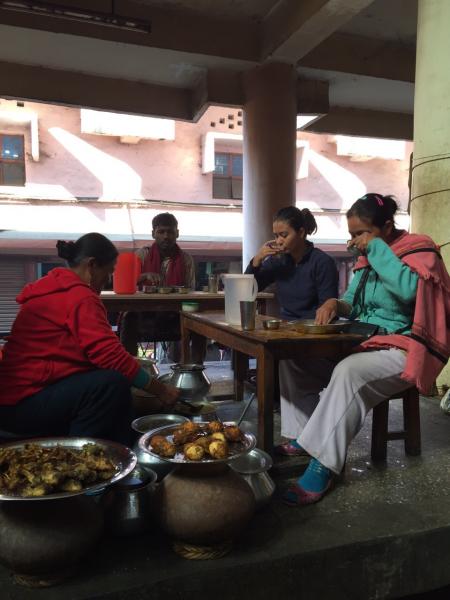Visit Imphal, the great capital city in Manipur:
Last year I spent my Christmas in my mother’s home town of Imphal (capital of Manipur). My dad is from Andhra Pradesh and his being in the armed forces our lifestyle has been nomadic. As soon as we get accustomed to a place it’s time to move again.
So this Christmas I decided to learn a little about the place my mom calls home. At 9 am on Christmas Eve we started our cultural Imphal walk from John Stones School, the oldest Indian English medium school.
It was established in 1885, named after an imminent British politician John Stone and is a functional all-boys school.

Through the bustling roads and navigating through the crowd of street vendors we reached the entry gates for Kangla Fort. Initially resting on both sides (eastern and western) banks of the Imphal River it served as the royal palace since the reign of Pakhangba (supreme deity of the Meiteis) who ascended the throne in 33 AD, according to the reports of the Royal Chronicle of Manipur.
However, it now lies in ruins on the western bank of the river. Kangla Fort has gone through several hands, the British Army, Assam Rifles and finally in 2004 it has been handed to the people of Manipur. The fort is also steeped with folklore and goes on to establish Kangla as the most significant site in Manipur.
After a short walk, we arrived at the gate of Mapal Kangjeibung (outside ground). The game of Polo has its origins in Manipur and it is in this ground Sagol Kangjei (polo) was first played and it continues to hold International Polo Tournaments.
The year 2014 marked the 150th anniversary of modern polo. An international level tournament was held during the Sanghai Festival (November) which hosted teams from Thailand, US, Mongolia, two teams from India etc.
Team B, which constitutes a majority of Manipuri players bagged the 1st position with United States standing 2nd. Constructed in the late 1800’s it is now home to offices of many sports associations such as boxing, weightlifting, football, polo etc. Moreover, a striking feature of this 19th century construction is the ‘donor’s wall’- it recognises all the donors along with their donated amount.
Though the polo ground has being an important part of Manipuri heritage it was sad to see how polluted and ill maintained it is. Moreover, in spite of being the birth place of modern polo a proper stable for the Manipuri ponies has not been established. It’s ironic how little appreciation and care is taken in maintenance of a sport that has brought laurels for the country.
Our next stop was ‘Ima (mother) Bazaar’ or Nupi Keithel (ladies market). Home to peculiar smells, cacophony and busy movements, it is the largest all women market in India. With 3 structures forming the market one is able to find everything from clothing to food to religious offerings. With streaks of sandal wood marking their forehead and their teeth stained with chewing kwa (betel) I was proud to see these stalwart women personify empowerment and independence.
With accounts dating back to the 16th century, the uprising against the British in 1904 and 1939 (Nupi Lan or women’s uprising) were believed to have been organised and conceived in these very markets. Thus women shopkeepers here are not simply business women but are leading examples of leadership and revolutionist.
While sipping on chai and eating bora (Pakora) in one of these women’s stalls, I realised this market is more than just a trading point for them. These women have developed a sentimental attachment to this market, spending the better part of their lives here.
Exploring the Imphal valley is the beginning of my journey through Manipur. In the coming days, I intend to head into the surrounding hills inhabited by the tribal’s of Manipur especially the district of Ukhrul being my mother’s birth place.
No comments:
Post a Comment